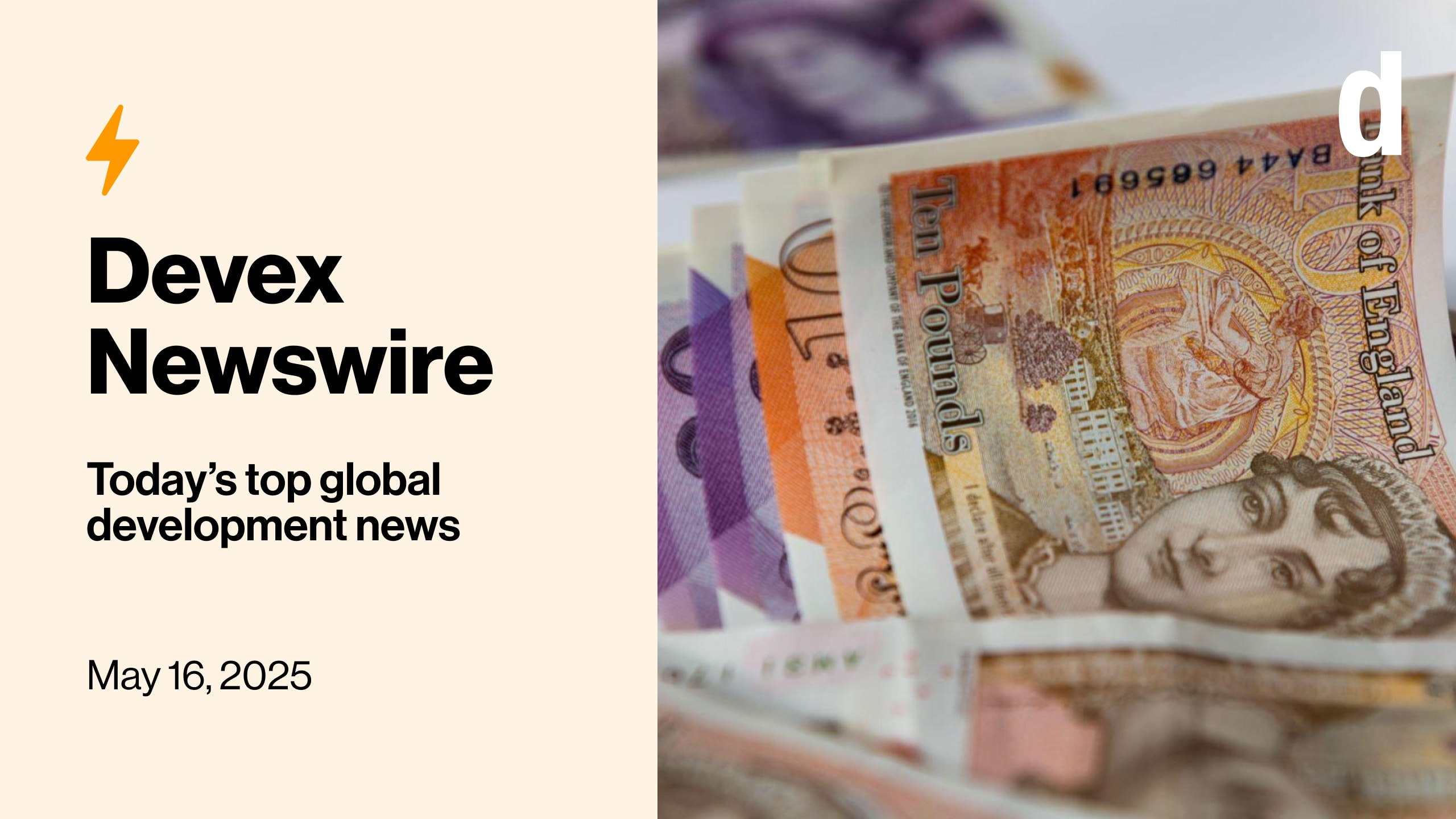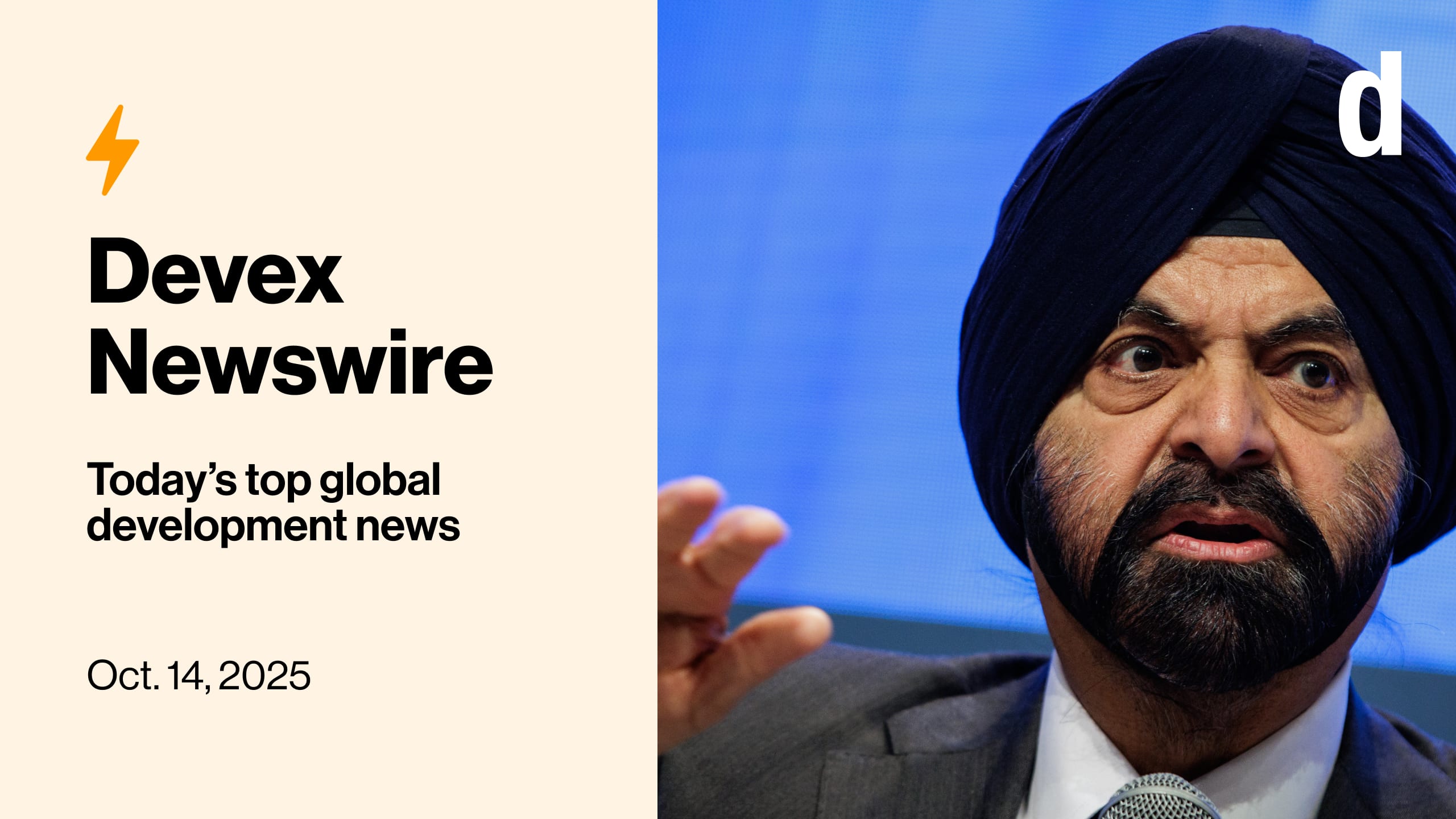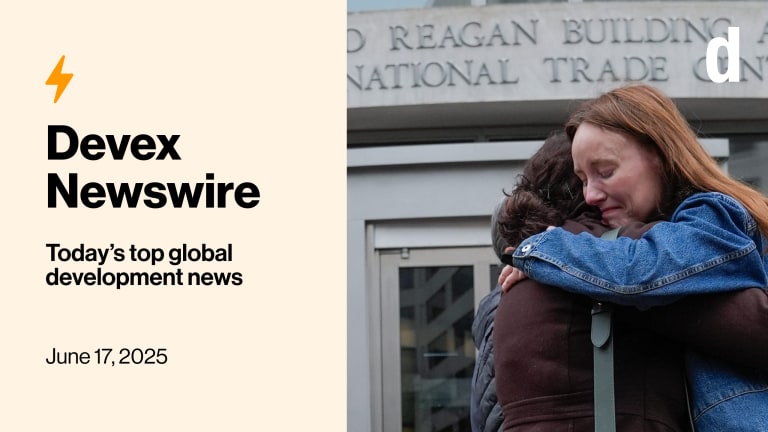
The United States is embarking on a review of its previously completed review of USAID programming. Is that bad or good news for those who did (or didn’t) make the cut?
Also in today’s edition: The World Bank’s Ajay Banga speaks to reporters — and surreptitiously to U.S. President Donald Trump?
The never-ending review
This is a preview of Newswire
Sign up to this newsletter for an inside look at the biggest stories in global development, in your inbox daily.
First, we got the announcement on Jan. 20 that the Trump administration was going to conduct a 90-day review of all U.S. foreign assistance. Then the timeline sped up and at the end of March, Secretary of State Marco Rubio announced the review was over — along with more than 80% of USAID’s programming.
Now, it appears the government may be backtracking, with an internal email from the State Department stating that the review has been extended for another 30 days, my colleague Elissa Miolene writes.
“With our additional time, we will work on doing another round of bureau feedback and get recommendations up to S [the secretary of state] and then over to [the Office of Management and Budget],” says Jeremy Lewin, the new acting director of foreign assistance at the State Department. “The timeline should now fit nicely with the budget proposal and better reflect the fact that, in view of the rapid S review of USAID and State [Department foreign aid] programs in February, the [foreign assistance review] is now more of a prospective budgetary document.”
Does that mean some of the axed programs could be brought back, or will the ones left standing be axed themselves? As with so many things during the Trump administration’s up-and-down purge of USAID, we don’t know.
After all, Lewin’s email isn’t the first time the administration has culled programs beyond those it told Congress about.
Just last week, a slew of additional programs previously tagged to survive the aid cuts were canceled, the majority of which provided lifesaving food assistance in conflict zones. Days later, Rubio tweeted that under his direction, the State Department had canceled another 139 programs on the congressional “active” list. And yesterday, State Department spokesperson Tammy Bruce told reporters they were “continuing to review the department’s global posture and programs to ensure that they serve U.S. interests.”
Read: Trump administration extends foreign aid review for another 30 days
+ Explore our dedicated page for all the latest news, in-depth analysis, and exclusive insights on how the Trump administration’s policies are reshaping global development.
Banking on consensus
Anything that smacks of climate change is on Trump’s radar — and not in a good way. That means the World Bank — which has prioritized fighting climate change — is a ripe target, so much so that some have worried that Trump could yank the U.S. out of the anti-poverty lender altogether.
In the lead-up to next week’s World Bank and International Monetary Fund Spring Meetings, World Bank President Ajay Banga sought to downplay the differences between his institution and the administration, insisting that its climate focus does not deter from its mission to eradicate poverty
“The words might be a problem in different people’s eyes, but when you unpeel the onion on what’s inside the 45% [climate finance target] that we committed to, we are not taking away from education and schools and development to fund something,” Banga said in a call with reporters Wednesday.
Banga said that the bank hasn’t “changed anything about the use of the word climate” but that “all these words and thinking go through the board and the shareholders.”
“This is a fair debate to have at the board level,” he said. “And then we’ll figure out what may change or not change.”
Banga seemed more eager to talk about jobs — and how only 420 million of them will be created for the 1.2 billion young people entering the workforce in low- and middle-income countries over the next decade.
Banga emphasized that without job opportunities, “the forces of fragility, of illegal migration, of instability, grow stronger.”
“I continue to believe that the World Bank Group is a smart investment for governments, for taxpayers and for the private sector to partner with,” he added in remarks that seemed directly aimed at an “America First” president looking for ways to slash taxpayer waste.
Read: World Bank’s Ajay Banga defends climate strategy ahead of Spring Meetings
Listen to our latest podcast episode: What can we expect from the World Bank Spring Meetings?
+ Want to connect with our team during the World Bank Spring Meetings on the ground in Washington, D.C.? Feel free to drop them a line at adva.saldinger@devex.com, jesse.chaselubitz@devex.com, or elissa.miolene@devex.com.
Blowing a FEWS
To tackle famine, you first have to know it’s happening — or about to happen. That’s where the USAID-funded Famine Early Warning Systems Network, or FEWS NET, came in. It was the gold standard for forecasting food crises globally up to nine months in advance, giving aid workers a critical window to stop people from starving to death.
I say “was the gold standard” in past tense because like so many other tools of foreign assistance, FEWS NET was a casualty of the Trump administration’s sweeping U.S. aid dragnet. Its collapse also crippled the data-gathering capabilities of the Integrated Food Security Phase Classification, or IPC, a U.N.-backed tool used to measure food insecurity and declare famine.
So my colleague Ayenat Mersie decided to ask: Can artificial intelligence plug the gap?
Machine learning and predictive analytics have already been used for years to make famine prediction faster, cheaper, and more scalable, she writes.
Now, that same energy is being channeled toward famine early warning systems, with a variety of AI-based tools under development by the International Food Policy Research Institute, or IFPRI; the World Food Programme; the Intergovernmental Authority on Development; and various universities.
So how does it work? IFPRI’s model, for example, pulls in dozens of data points, then uses machine learning to forecast the extent and severity of acute food insecurity up to a year in advance. Before it can become reality, the model needs to be peer-reviewed and published, which could happen later this year.
“We are not trying to replace IPC or FEWS NET,” says Yanyan Liu, a senior researcher at IFPRI. “But we can say that our model, this method, is complementary.”
Anything is better than nothing at this point. As Nicholas Haan, who helped create IPC in 2004, puts it in an earlier article: “Just because we know less doesn’t mean the suffering is less.”
Read: As famine data dries up, can AI step in?
ICYMI: After decades of progress, USAID cuts could blind the world to famine
+ Sign up to Devex Dish — a free, must-read Wednesday newsletter — to keep up to date with the race to remake a more equitable and sustainable global food system.
Smorgasbord of cuts
To make sense of this new era of aid, our latest Devex Pro Funding live conversation unpacked what all the recent news means for the future of development organizations. Here’s a sampling:
• U.S. funding?
The U.S. State Department, the Millennium Challenge Corporation, and U.S. Department of Agriculture may remain more stable funders in the short term — although details are scarce.
Expect mergers and closures among U.S. implementing partners as they grapple with reduced pipelines.
• European aid?
Germany’s latest news showed it is moving forward with cuts to its aid budget.
While the EU publicly said it “cannot fill the gap” left by U.S. aid cuts, internal analysis seen by Devex revealed that Brussels is assessing where it might step in — even as it plans a €2 billion reduction in development spending.
• Multilateral development banks?
MDBs disburse billions of dollars annually — but organizations need to engage early, reviewing procurement pipelines and building relationships both at the institution and at the government levels.
• Philanthropy?
In 2022, major philanthropies contributed $11 billion — more than some donor governments, but just 5% of global official development assistance.
Watch: What’s next for global development funding in 2025 (Pro)
+ Not yet a Devex Pro member? Start your 15-day free trial today to access all our expert analyses, insider insights, funding data, exclusive events — and also get the Pro Insider, a special Sunday newsletter that gives you a weekly head start on our industry’s big moves.
In other news
Career diplomat Dorothy Shea has become the unexpected face of Trump’s “America First” agenda at the United Nations. [The Washington Post]
A record 5.7 million Haitians are expected to face acute food insecurity by June amid escalating violence and economic collapse. [UN News]
In a diplomatic move, Russia formally removed Afghanistan’s ruling Taliban from its list of banned terrorist organizations. [AP]
Sign up to Newswire for an inside look at the biggest stories in global development.








